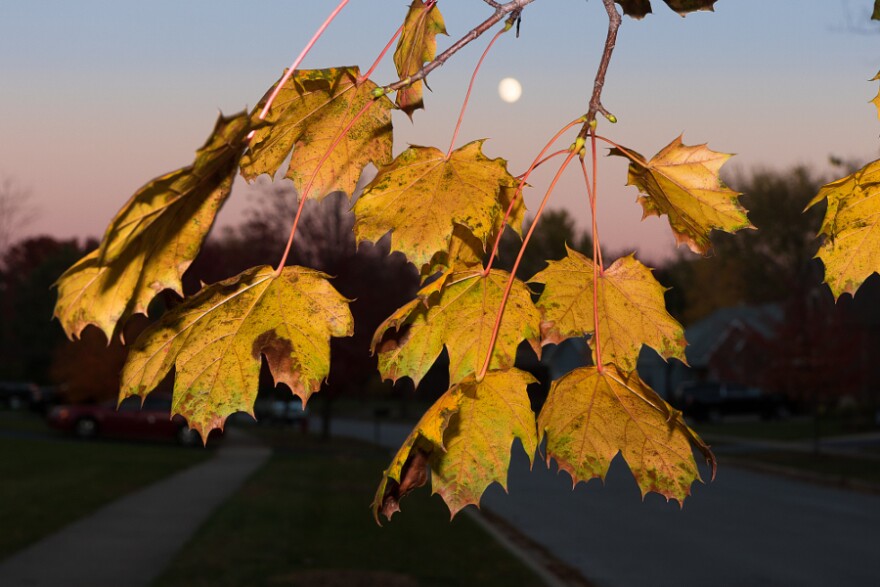Under this waxing moon, a major shift in foliage color occurs all along the 40th Parallel. The nights grow colder; the mornings sometimes bring frost. The frogs and toads wander yards and gardens looking the right places to dig in against the winter. Throughout the fields, aster and goldenrod flowers lose their color. Brown beggartick burs stick to your stockings, and the winged seeds of Japanese knotweed fall. In urban ponds, water lilies stop blooming.
When you go outside after the moon disappears, you will see autumn’s Northern Cross, accompanied by Aquila and Lyra, setting in the west. Above you, the Great Square lies below the Milky Way. In the east, winter’s Orion has risen behind the Pleiades. In the northern sky, the Dig Dipper hugs the horizon. Deep in the southwest, Fomalhaut hovers above the tree line.
As the crescent Frog and Toad Migration Moon approaches its second quarter, lunar conditions become ideal for seeding spring spinach and for putting in a green manure cover crop in the garden.
Autumn apples fill with juice as moon gets fatter. Red knuckles of rhubarb sometimes push to the surface, promising pie for springtime. Spruce growth season begins on spruce trees, fresh needles already sensing April. The grass continues to grow on paths and in pastures, glowing in the low sun. Winter wheat creates patches of bright green in the countryside. New hepatica leaves are dark and strong along rocky paths.
This is Bill Felker with Poor Will’s Almanack. I’ll be back again next week with notes for the third week of middle fall. In the meantime, this is the time to watch one or two specific trees – and keep track of their changes through the weeks ahead.



